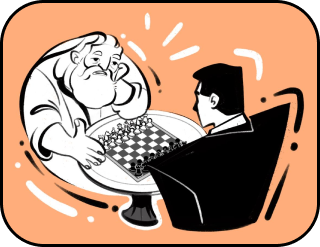Robots vs. humans: an epic battle without a winner
Dear lovers of the most spectacular showdowns! We find ourselves in the MMA arena, where at any moment, blood and machine oil may be spilled.
In the red corner of the ring stands the pinnacle of evolution — the human. An inventor and creator, endowed with emotions, the ability to empathize, dream, and make complex decisions.
In the blue corner of the ring stands the robot — an unparalleled creation of humanity, equipped with incredible speed, precision, and strength. The apex of technological progress, an energetic worker ready to accomplish tasks in record time.
The battle of the century promises to be fierce: robots versus humans. Who will disable their opponent first?
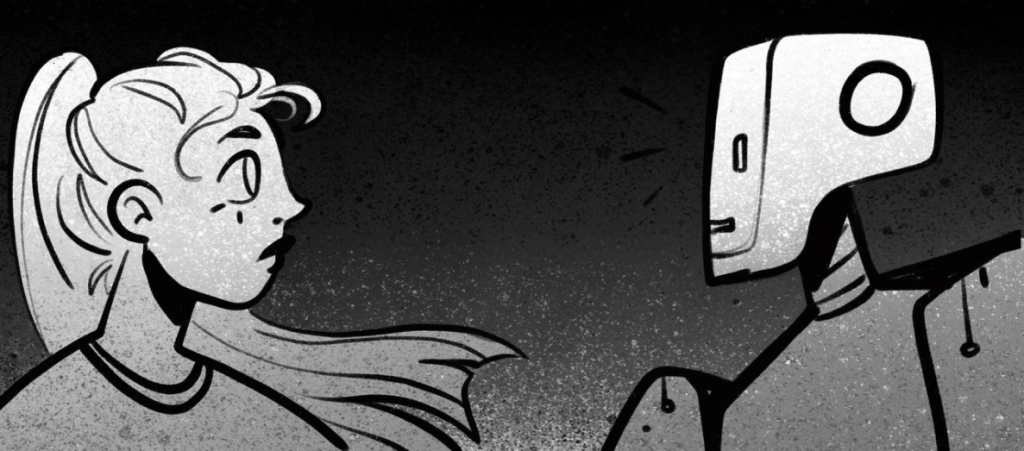
A battle of Perspectives
Since the invention of the first mechanical devices, humans have dreamed of creating beings capable of doing their work for them. Robots, designed to make life easier, inspire both awe and fear. But what if robots surpass us?
A future where machines become stronger, smarter, and more efficient than their creators has long been imagined by sci-fi authors, screenwriters, and writers. Pop culture has shaped the image of machines that can either save the world or pose a threat to it.
Robots are already replacing humans on factory floors, assisting in medical and financial operations, and even actively participating in combat. The question, “Can robots fully replace humans?” has become more pressing than ever.
Armed with intelligence and creativity, the human strikes a glove against the robot, equipped with strength, speed, precision, and endurance.
The fight is about to begin, and we have a few moments to reflect on what led to this historic clash. It’s not every day that the Creator steps into the ring against their own creation. The evolution of technology has been uneven, and it seems that a showdown between Robots and Humans is inevitable.
Warm-Up Before the Fight: A Historical Background
Stage One: Ancient Dreamers
Even in ancient times, humans dreamed of mechanisms that could perform routine tasks for them. Greek mathematician and engineer Hero of Alexandria created automatic devices, ranging from simple machines for water supply to theatrical mechanisms that amazed audiences.
Archytas of Tarentum sought to design a wooden robotic dove capable of flying like a real bird. According to rumors, as early as 300 BCE in Alexandria, the first robots appeared—giant figures shaped like women guarding the lighthouse. These robot-women demonstrated the force of the wind and sea waves by moving golden arrows on dials, indicating wind direction and tracking the movement of the sun and moon
They were easily noticeable during the day, while at night they were illuminated by artificial light from lanterns. Two of the figures had special features—they occasionally came to life, turned around, and struck a bell. At night, these robot-women emitted loud signals to warn ships of danger.

Stage Two: Designing Complex Mechanisms — Automata
Automata were more complex mechanical devices designed for single or multiple actions. In the 15th century, Leonardo da Vinci designed a mechanical lion and a knight in his sketches, though they were never built.
During the same period, religious automata became particularly popular. These were often life-sized wooden figures of the Virgin Mary equipped with clockwork mechanisms, allowing them to move their heads, articulate, and perform a blessing gesture.
Greek mathematician Philo of Byzantium created a life-sized mechanical servant. One hand held a vessel of wine, while the other required an empty cup to be placed. This automaton was intended for friendly feasts. Inside the servant, a mechanism transported water and wine from reservoirs through tubes to fill the cup.
In Japan, robots known as “karakuri” emerged. One of the most famous, Chahakobi Ningyo, appeared during the Edo period after 1603 and was used in tea ceremonies. This domestic automaton delivered a cup of tea from the host to a guest. After the guest finished drinking and placed the cup back, the robot returned it to the owner. Moreover, Chahakobi Ningyo could be programmed to stop or turn at specific points.
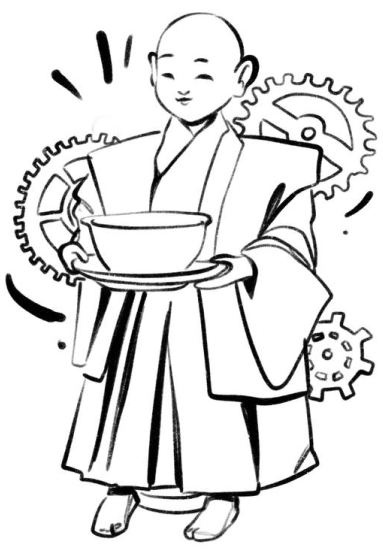
Stage Three: Industrial Automata
The most remarkable automata appeared in the 17th–18th centuries. Over time, these mechanisms became increasingly sophisticated, capable of eating, playing musical instruments, drawing, writing stories, and even predicting the future.
The term “android” originated thanks to watchmaker Henri-Louis Jaquet-Droz, known for his clockwork toys. In 1740, inspired by Leonardo da Vinci’s works, French mechanic Jacques de Vaucanson created a copper robot duck that quacked, drank water, flapped its wings, and even digested food.
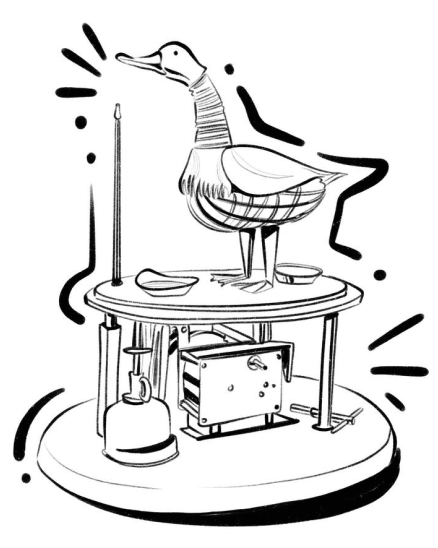
In 1774, Swiss watchmaker Pierre Jaquet-Droz and his sons created three intricate automata: The Musician, The Writer, and The Draughtsman. The Writer, consisting of 6,000 parts, wrote in calligraphy, dipping his pen into an inkwell and shaking off excess ink. The Draughtsman could draw four pre-programmed images and even blew dust off the paper.
In 1869, American inventors Zadoc Dederick and Isaac Grass unveiled a steam-powered automaton capable of pulling a carriage. It was designed as a human figure about 2 meters tall, weighing 226 kilograms. It earned the nickname “Daniel Lambert” after a famously large Englishman.
Stage Four: A Global Breakthrough, Human Interaction, and the Rise of Robots
The term “robot” became known worldwide thanks to Czech writer Karel Čapek, who introduced it in his play R.U.R. (1920). In the story, robots worked in factories and performed tasks accessible to humans. However, the robots in his play weren’t mechanical but biological beings created in laboratories. This work was a significant step in popularizing the concept of robots, and soon the first mechanical devices designed for simple tasks began to emerge.
One such robot was Televox, created by Roy Wensley in the late 1920s. This humanoid robot could follow commands, open doors, turn off ovens, and even respond with sounds. It was an important step toward improving interaction between humans and machines.
In the Soviet Union, the B2M robot was introduced in 1936. Created by 16-year-old student Vadim Matskevich, it was showcased at the World Robot Exhibition in Paris. The B2M could perform several simple commands and move its arms and legs. However, at the exhibition, its right arm had to be disabled because its movement resembled an inappropriate gesture.
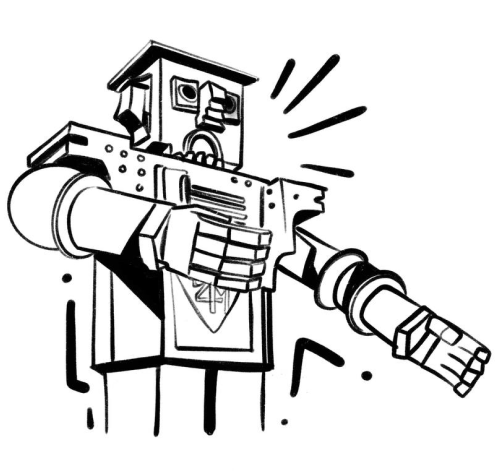
With the advancement of technology, more complex robots appeared. In 1950, devices with programmable manipulators, such as Unimate, were created. It was the first industrial robot, used on the assembly line by the General Motors automotive company. Unimate revolutionized production processes, replacing humans in routine and hazardous tasks—a crucial milestone in robotics development.
— Alright, alright, Alex… I think the audience is here for the fight, not a school lecture.
— You’re right, John, I got a bit carried away. It’s an interesting story though—robots were initially designed to help, but then humans developed a need to control something.
— Alex, what can we do? We’re commentators, not teachers.
The bell rings, and the fight begins!
Round One: The Job Market
Modern technologies are rapidly transforming the job market. With each passing year, sleek robots and equally sophisticated algorithms are taking positions that were once exclusively held by humans. This process, known as automation, has its pros and cons.
Robot Strikes:
The Industrial Sector: Robots like Unimate were the first widely-used industrial machines back in the 1960s. Today, automation covers nearly every industry—automated conveyor systems handle routine and dangerous tasks such as welding, assembly, and packaging. A prime example is Tesla’s production process, where 90% of the work is performed by robotic manipulators. Robots significantly improve precision, speed, and safety, eliminating the need for human labor in the most challenging areas.
The Logistics Sector: Robots are actively used in warehouse operations. Amazon employs Kiva robots, which can transport goods across warehouses faster and more efficiently than humans. Autonomous trucks are already undergoing testing, and their mass adoption promises to revolutionize the entire transportation industry. According to research, warehouse and logistics automation reduces companies’ costs by 20-30%, but it also leads to job losses for low-skilled workers.
The Service Sector: Automation is spreading across more areas in the service industry: self-checkout counters in supermarkets, robot waiters in restaurants, and automated chatbots in support services. For example, AI-powered programs like ChatGPT are replacing humans in copywriting, text translation, and even programming. According to Statista, the global service robotics market is expected to grow to $46 billion by 2025.
The Healthcare Sector: Robots like Da Vinci provide incredible precision in complex surgeries. Diagnostic algorithms that analyze X-rays and MRI scans already outperform doctors in identifying diseases. These systems help physicians make faster diagnoses and develop personalized treatment plans.
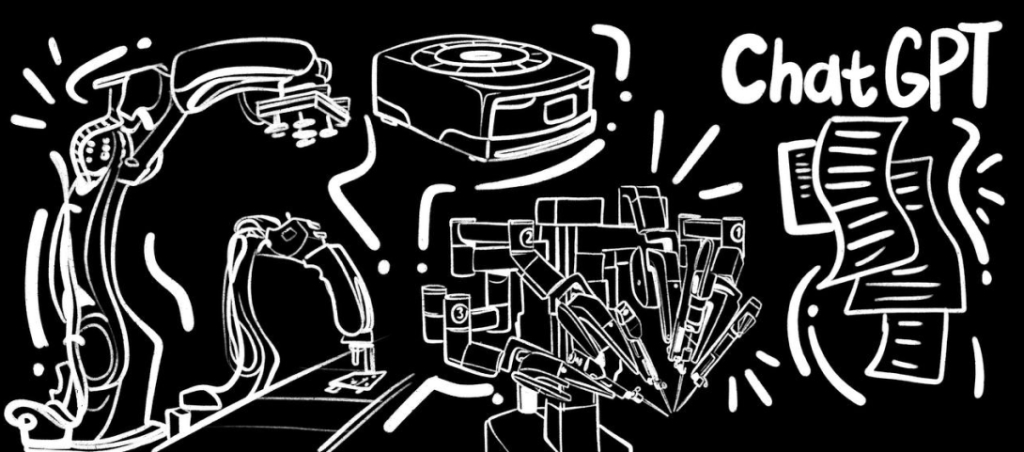
Human Counterattacks:
According to McKinsey research, about 15% of global professions could be automated by 2030. However, millions of new jobs will emerge in fields like IT, education, and healthcare. New positions involving the development, maintenance, and management of robots are already being created. Today, professions in artificial intelligence and machine learning are among the highest-paying.
Emotionally-Intelligent Professions: Robots cannot show empathy, understand complex emotional states, or build trust-based relationships. Thus, humans remain indispensable in areas like psychology, education, healthcare, social work, and childcare. The demand for content creators is also growing since creating unique and creative content, from videos to articles, still requires human involvement.
Control and Management of Technologies: As automation grows, so does the demand for specialists who design, train, and maintain robots. For example, robotics engineers, cybersecurity specialists, and AI algorithm developers are becoming key players in the labor market. Humans must also train and adapt robots for new tasks, which requires a deep understanding of technical processes and analytical thinking.
Advances in Medicine and Biotechnology: New medical fields are emerging with technological advancements, such as gene therapy, organ cultivation, and personalized medicine. Biotechnologists, geneticists, and researchers are creating the future of healthcare by finding innovative approaches to treating complex diseases.
Creativity and Adaptation: Humans can think outside the box, adapt to rapidly changing conditions, and come up with new solutions. This is a crucial advantage that robots cannot replicate. People can use automation as a tool to unlock potential in more complex and engaging tasks, such as innovation development, social projects, and culture.
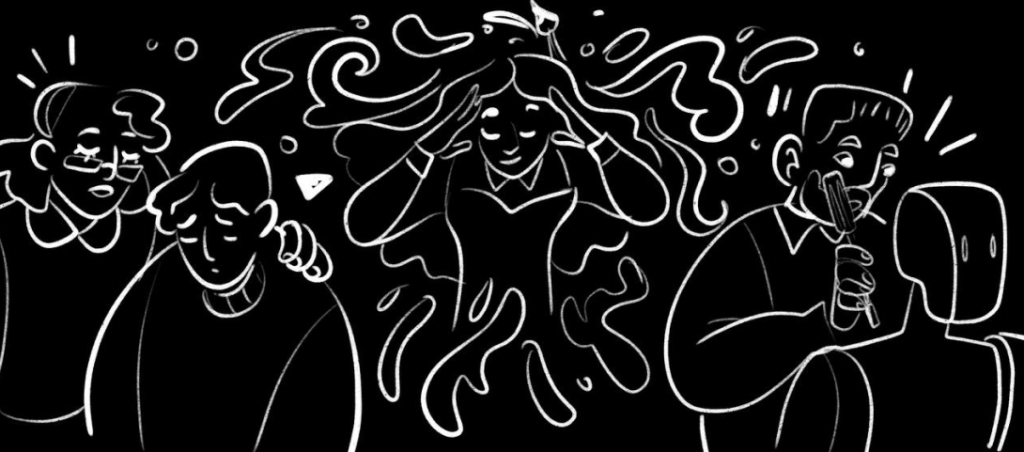
— Do you remember, John, there was a time when robots and humans worked as one—working together, relaxing together? Take robot teachers, for example. A robot may teach better than a human, but can it truly educate? Can it share life experience and emotional insight?
— Fortunately, humans eventually realized that robots with artificial intelligence are tools meant to assist, not replace us.
— Realized? If we’re watching a fight between robots and humans today, it seems like they’ve realized nothing at all.
Round Two: Household Tasks
Washing machines, kettles, dishwashers, smart vacuums—all these technologies perform automation. Instead of boiling water in a bucket, people turn on a kettle, and the water heats itself. Instead of washing clothes by hand, they load them into an automatic washing machine. These helpers save time, which can be spent on something greater.
However, boasting about having a dozen robots at home isn’t entirely accurate. As strange as it sounds, a robot is defined as a device capable of analyzing and solving tasks independently—for example, throwing a sweater into the washing machine or taking dishes out of the dishwasher and putting them away. “Smart gadgets” for a “smart home” are merely mechanical tools.
Robot Strikes:
Robots have confidently entered our daily lives, handling tasks that once seemed purely human. According to statistics, using household robotics reduces routine chores by 30–50% on average. However, this comfort comes at a cost.
Research shows that about 65% of users admit they have become dependent on their household devices. For instance, people stop thinking about cleaning methods, relying entirely on technology. In emergencies, such as power outages, many feel helpless, unsure of how to manage household tasks on their own. Additionally, there are environmental concerns—due to constant model upgrades, millions of old robots end up in landfills, increasing electronic waste.
Robotic Vacuums: Models like iRobot Roomba, Xiaomi Roborock, or Ecovacs Deebot map apartments, avoid obstacles, and even automatically empty their dustbins. In 2023, more than 31% of homes in developed countries used such devices for regular cleaning. For example, the Narwal T10 cleaning robot not only mops floors but also cleans its mopping pads autonomously.
Smart Kitchen Helpers: The Instant Pot Smart WiFi lets you cook meals via a mobile app, while the Thermomix TM6 multitasks as a blender, steamer, and even a mini-oven. Leading the way is the Moley Robotics Kitchen, which prepares meals without human intervention and even cleans up afterward.
Smart Refrigerators: Models like the Samsung Family Hub track product expiration dates, create shopping lists, and suggest recipes based on the fridge’s contents. These aren’t just appliances; they’re personal kitchen consultants.
Laundry Robots: FoldiMate folds clothes, while the LG Styler dries and refreshes garments, removing odors and wrinkles.
Voice Assistants: Assistants like Amazon Alexa, Google Assistant, or Yandex Alice integrate all devices into a single network, allowing voice-controlled management of lighting, climate, and even security systems.
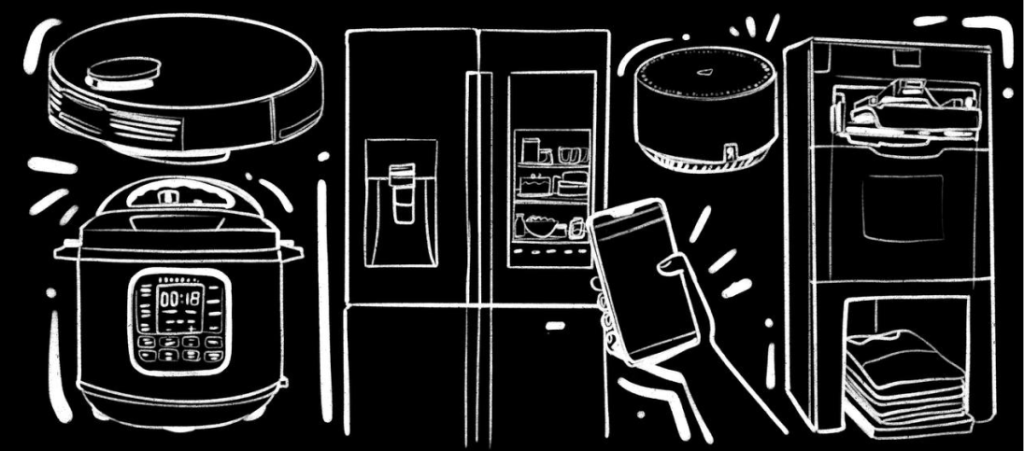
Weak Counterstrikes from Humans: A Blow to Themselves
According to a Statista study, users of smart household appliances save 10 to 20 hours per month on chores. This time can be spent on rest, hobbies, or family interaction. However, the saved time isn’t always used effectively. Psychologists note that 42% of people spend their free hours on passive activities like browsing social media or watching TV. Robots, by taking over all the routine, can lead to a loss of discipline, as instead of cleaning or cooking, people gain a platform for procrastination.
People increasingly forget how to handle household tasks: how to cook without a recipe, clean without gadgets, or wash clothes without a washing machine.
Moreover, household robots require regular maintenance and updates. Outdated models are often discarded, contributing to 50 million tons of electronic waste annually, which poses a threat to the environment. Privacy concerns also arise: internet-connected devices like smart cameras and refrigerators can become targets for hackers.
The habit of delegating work to machines often reduces physical activity. A generation raised alongside robots might become a sedentary generation, knowing more about how to launch an app than how to cook simple porridge or boil pasta.
Electricity and internet have become the foundations of this comfort. When electricity goes out, smart devices turn into useless objects, leaving users bewildered.
Today, we rely on robots to handle routine tasks, but what will happen tomorrow when technology fails? We may find ourselves completely unprepared for life without them.
Modern dependence on technology could become a dangerous trap we’ve all fallen into, forgetting that the ability to manage basic tasks is still an essential part of our independence.
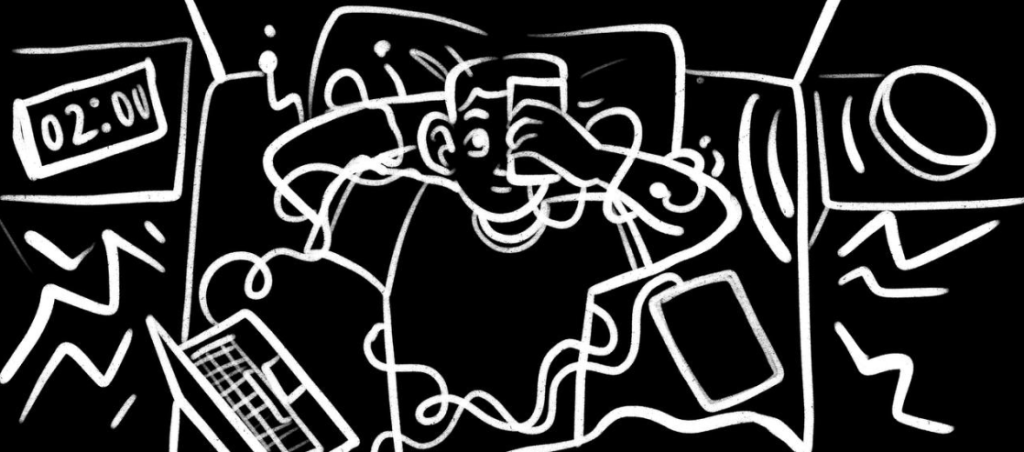
Round Three: Military Robots
— Did you see that strike, John? So sharp, so precise… I can’t believe the referee isn’t stepping in!
— Yeah, this match turned into a farce a long time ago. Humans and robots are fighting so dirty it’s as if they’ve forgotten the very rules they created.
— And do you know who’s to blame, John? Humans. It’s humans who taught robots these dirty tricks. The irony. The creation copies its creator down to the most monstrous details.
Human’s Dirty Blows to the Back of the Head:
Military history shows how technologies created to improve life often turn into instruments of destruction. Dynamite, originally developed to aid miners, became a deadly weapon. Zyklon B, designed to exterminate insects, was used to kill prisoners in concentration camps. Tanks, initially intended for breaking fortifications, and airplanes, invented as reconnaissance tools, became machines of destruction. Flamethrowers turned battlefields into burning hellscapes.
By the mid-20th century, weapons of mass destruction had reached their peak. World War II introduced the atomic bomb, capable of annihilating entire cities in an instant. German V-2 rockets became prototypes for modern ballistic systems, striking targets across vast distances. Even after the war, destructive technologies continued to claim civilian lives. These inventions remind us that progress brings creation, but its effects depend on whose hands it falls into.
Robot’s Low Blow:
Drone swarms, autonomous combat machines with AI—they move silently, without emotions, without remorse, without consideration of consequences. One command, and the target is eliminated. Robots cannot distinguish good from evil, nor can they bear responsibility. Inside them is an algorithm they obey, but imagine if the algorithm malfunctions and starts destroying indiscriminately. Who would be to blame? The algorithm.
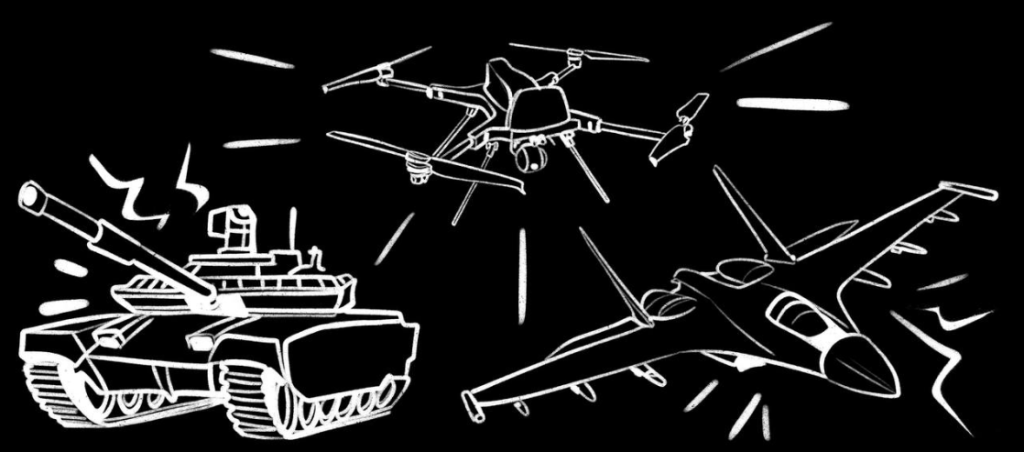
Round Four: Pinning the Opponent
“Can a robot compose a symphony?”
Despite all advancements in robotics, humans still possess several strengths that robots cannot replicate. The first is creativity. Humans are not only capable of solving problems within set algorithms but also of going beyond the boundaries, generating unique ideas, concepts, and works of art. Creativity enables humans to see the world not only through the lens of existing data but also to imagine and invent something entirely new, unpredictable by any computation. This quality makes humans truly unique compared to machines, which can only mimic the creative process without actually creating anything.
Another human strength is emotions and feelings. Robots cannot experience such things. They can simulate a semblance of emotions, but their perception and reaction to the world remain limited. Joy, pain, happiness, anxiety—these are all responses of the human body to specific stimuli, making humans a more vulnerable and complex system compared to robots. Moreover, humans can both perceive and express emotions, a quality that no algorithm can replace.
Finally, morality and ethics are crucial areas where humans surpass robots. Humans make decisions considering not only facts but also moral aspects, such as the rights of others, societal welfare, and potential consequences. Machines, despite all their computational power, cannot comprehend these nuances or base their decisions on them. This makes humans accountable for their actions in a moral and ethical context, while robots remain mere tools, devoid of independent moral judgment.
Each of these traits is an exclusive human advantage, allowing us to remain at the center of decision-making and societal progress.
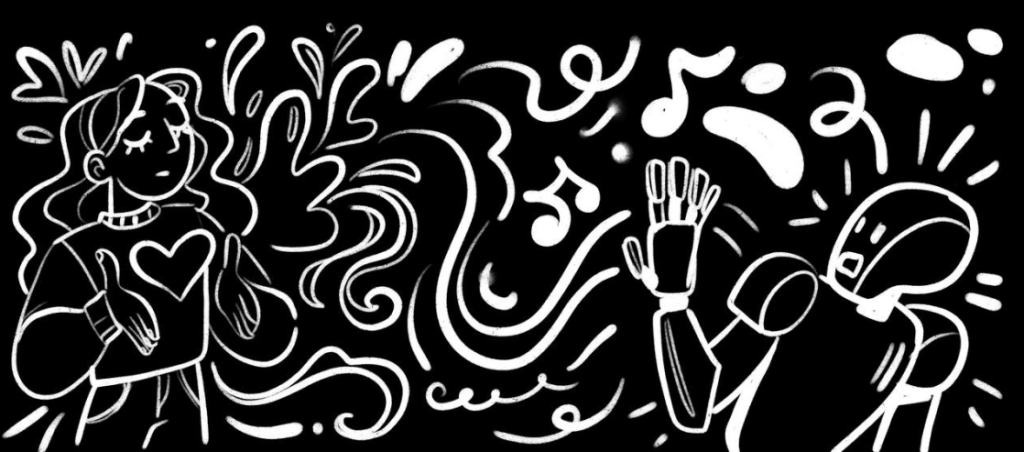
— WHAT A HIT!!! A sharp punch to the jaw sent the robot into a knockout. Humanity wins!!!
— John, this was the most exciting match of my life, and I’ve seen many. This battle, this struggle! I think we’ve all proven today that robots…
— Look, Alex, the robot’s getting up… It’s acting strangely. Oh my God, it’s opening fire on everyone in the arena!
Possible Future
Observing the rapid development of the robotics industry, it’s only logical to ask: “What are our possible futures?”
In the future, we might witness several scenarios. Take, for instance, the boxing match we described between a robot and a human. The robot’s algorithms malfunctioned, despite assurances that such an event was “impossible.” “A robot must always obey humans and never harm them,” as stated in Isaac Asimov’s Three Laws of Robotics. Yet, at that critical moment, the robot experienced a system failure. On that fateful day, after being knocked out by a human, the robot shot at most of the audience. Naturally, such an incident forced people and corporations to thoroughly investigate every robot and push for new laws. These laws cost corporations a fortune but at least provided some level of safety.
You might say, “That could never happen.” But is artificial intelligence fully understood by us? Haven’t there been enough historical cases of systems making critical errors?
“Robots take over jobs and become leaders in society, forcing humans to fight for their place” is a possible scenario warned about by some scientists and futurists. Another scenario could see robots remaining helpful assistants while humans find new roles for them, such as in creative professions and innovation. A third scenario might involve the merging of humans and robots, where exoskeletons, bionics, and neural interfaces enable humans to become stronger and faster, with machines becoming an integral part of their bodies.
Or perhaps, we’ll all have to take full responsibility for everything that happens in life—both for ourselves and for the robots.
We’ve ventured beyond the boundaries of time and space. By the way, it’s empty there.
Thank you!


